Which wild survival plants can you harvest this spring? You will find edible and medicinal plants, so forage for food when it starts getting warmer and the new growth period commences.
There are plenty of edible mushrooms, fresh salad greens, shoots, and flavorsome flowers to be found.
You may want to invest in a guidebook to make sure you know how to identify edible plants as some may be poisonous to humans. Never eat a plant of which you are not sure.
Related: How To Identify Poison Ivy Growing In Your Backyard
Dandelions
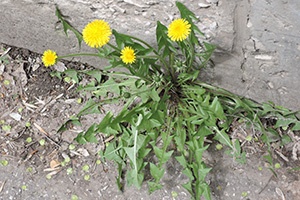 Dandelions are edible and have medicinal properties. Use the roots to make coffee, the leaves to make pesto, and produce salve with the flowers.
Dandelions are edible and have medicinal properties. Use the roots to make coffee, the leaves to make pesto, and produce salve with the flowers.
Use the herb’s leaves and yellow flower petals in a salad or cook and eat the leaves as you would spinach.
You may need a trowel to remove the roots from the soil intact to make dandelion root coffee in early spring. They shrink and become bitter when the plant starts flowering.
You will need about 15 – minus the thin, spindly parts you can use for a tincture – to make enough for one cup of coffee.
Wash them carefully and chop them off and save the upper leaves to create a delicious salad. Roast the root for 40 minutes at 350 degrees.
Once dry and roasted, mix the roots with cardamom, fennel, or cinnamon – if you have any at hand – and simmer the mixture for ten to 15 minutes. Strain it through a thin mesh and enjoy!
Chickweed
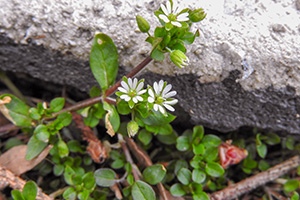 Chickweed is a pleasant green. You can eat the flower, bud, leaf, and the tender one or two inches of the top of the stem.
Chickweed is a pleasant green. You can eat the flower, bud, leaf, and the tender one or two inches of the top of the stem.
People see it as a weed in North America, but alternative medicine practitioners and herbalists view it as nutritious food and a folk remedy with health benefits.
Chickweed contains more minerals and vitamins per ounce than kale or spinach.
It grows to just a few inches above the ground, has small leaves with pointed tips that are teardrop to egg-shaped, and grow opposite each other on the stem. Fine hairs cover the tiny flowers – that consist of five white petals with deep crevices – and the leaves around their base.
A single line of ‘hairs’ runs along the stem’s length, distinguishing it from its poisonous lookalike, scarlet pimpernel.
Chickweed has several medicinal uses. Treat itchy insect bites and alleviate inflammatory skin conditions, rashes, eczema, and psoriasis topically. You can ingest chickweed leaves to fight bowel and stomach disorders like constipation, asthma, and other lung problems.
Use it to treat scurvy (vitamin C deficiency), blood disorders, obesity, muscle, and joint pain.
Related: Homemade Hot Pepper Cream for Arthritis & Joint Pain
Now that you know that it can assist you in so many ways, you may re-consider killing all the chickweed in your lawn and garden.
Cattails
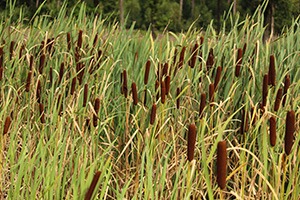 Cattail shoots are seen by many as the definitive survival plant. Every part of this bulrush-type plant has a use.
Cattail shoots are seen by many as the definitive survival plant. Every part of this bulrush-type plant has a use.
Cattails are aggressive growers that behave like an introduced weed, but they are an indigenous element in many natural communities and are beneficial as wildlife habitat.
You can eat the cat’s tails and the young shoots – that resemble leeks and taste like cucumber – raw or sautéed. The first four to ten inches are tender.
Use the yellow pollen that coats the top male flower cluster as a substitute for flour in pastries and bread. Shake the pollen into a bag and use a kitchen strainer to remove the insects and woolly material.
Place it on a flat plate at a low oven temperature – with the door open an inch or two – for about two hours to dehydrate, or it may mold and go bad.
Boil the male flower for ten to 15 minutes or sauté it. Eat the bottom female cluster like corn on the cob while it is still young and green. Simmer it for 15 to 20 minutes and add salt, pepper, and butter for a delicious meal.
The plant grows in swampy and desert areas. Make sure that you only pick plants that have cigar-shaped heads. Don’t eat a similar-looking plant that doesn’t have them. You may be ingesting the iris, which is poisonous.
Berries
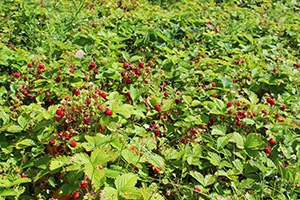 Harvest blueberries from late May or once they’ve turned grey-blue all around and fall into your hand without needing to be pulled or tugged.
Harvest blueberries from late May or once they’ve turned grey-blue all around and fall into your hand without needing to be pulled or tugged.
The best time to harvest blackberries in the south is spring or early summer – when they’ve turned from red to black – whereas the peak season is during July and August in the rest of the country.
Related: 8 Plants That You Need To Know How To Harvest Seeds From
Wild strawberries are common native plants. They are edible, sweet-tasting, juicy, and found in yards, woodlands, and open fields. They are warm-weather plants that ripen when the weather suits them – from early May to late October – depending on the temperature.
Wild strawberrie turn red when ripe, are smaller and seedier than cultivated strawberries, and smell sweet. You can eat other parts of the plant and make a tea of the vitamin C-rich leaves.
Eat berries fresh on cereals, in pancakes, or fruit salad shortly after harvesting, or freeze them. You can also turn them into sauces, jellies, jams, and preserves.
Mushrooms
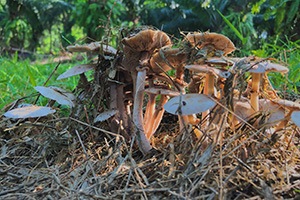 Forage for morel mushrooms. Their caps are egg-shaped, bulbous, cone-shaped, or oblong and attached to short, chubby stems. They can be small or large. Cook before eating them; they taste lovely when deep-fried or sautéed. Morel mushrooms are tender and meaty with a woodsy, earthy, nutty flavor.
Forage for morel mushrooms. Their caps are egg-shaped, bulbous, cone-shaped, or oblong and attached to short, chubby stems. They can be small or large. Cook before eating them; they taste lovely when deep-fried or sautéed. Morel mushrooms are tender and meaty with a woodsy, earthy, nutty flavor.
Oyster mushrooms grow in many areas through spring into fall. They originate on tree stumps and fallen logs and have a gentle, aromatic flavor and delicate texture. They are fan or oyster shaped with thin, broad, tan, grey, or white caps with gills along the underside.
King Bolete or porcini mushrooms grow in decomposing organic material under conifer trees and come out in spring or after rainfall in late summer or fall. The yellow-brown to reddish-brown cap resembles a somewhat greasy bun.
Related: Edible and Non-edible Mushrooms you Find in Forests
They can grow up to 12 inches and weigh two pounds when mature. The solid white stem shows a faint webbed or net pattern, and the flesh should stay white when you cut it. The earthy, nutty, meaty flavor is tasty in broths or sauces.
This recipe will work for almost any type of mushroom. Cut the mushrooms into pieces of equal sizes for even cooking. Heat two tablespoons of olive oil in a heavy, large pan at medium-high temperature.
Spread the mushrooms out evenly and leave them to cook for three to five minutes until they start to brown. Toss them and cook for the same amount of time until they are brown. Mix in a few thyme sprigs, garlic cloves, and two tablespoons of ghee or butter.
Cook another five minutes on medium-low while spooning the butter over the mushrooms. Cook until dark and just about crispy and season to taste with salt and pepper.
What Other Options Are There?
Spring nettles consist of 25 percent protein and are high in vitamins A and C, calcium, manganese, potassium, and iron. Harvest the stem and top four leaves in March or April if you have a pair of rubber gloves, a bucket, and kitchen scissors. You can still eat the leaves later, but only until they start to bloom. Sego lily bulbs and bark bread are also famine foods.
Gather bright green, tender white spruce buds and needles to make tea for colds and flu and grind the bark to make flour.
Boil or roast green maple seeds – the smaller, the sweeter. Remove the outer skin, simmer them until soft – about 15 minutes – or place them on a baking sheet for eight to ten minutes at 350 degrees. Add butter, salt, pepper, or the seasoning of your choice.
We’ve mentioned a few of the tastier possibilities and wish you happy spring eating from the wild forests, roadsides, open fields, and your backyard.
You may also like:
 Debunking Expiration Dates & What You Need to Know
Debunking Expiration Dates & What You Need to Know
The Killer Tree You Should Never Have In Your Backyard (Video)
How To Make Calcium Supplements from Eggshells
I Opened Some C-Rations From The Vietnam War And This Is What Happened

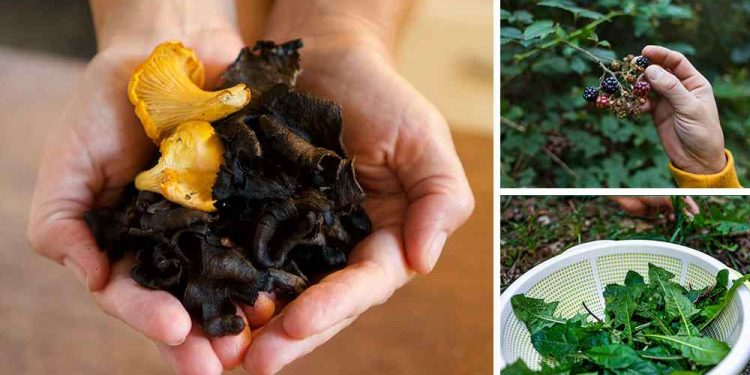




















Many folks actually forage in the parks and along the roadways here in the big city. Even though I have a garden, edibles are always planted in pots where I can control the soil. Who knows what others might be putting down? Don’t want to take any chances! Choose your location wisely.
One thing I read in a book by Rodale Press back in the 80’s that has stuck with me, was that growing vegetables in close proximity to a highway could be contaminated with Cadmium from the car tires. Guess it would apply to harvesting herbs as well.
google jam recipies of dandelion, lilac, rose, and rose hip, violets also make a taste jam
Also Jacaranda flowers, makes jelly of tea.
Your forgot lambs quarters leaves (and later seeds) and wood sorrel (leaves and flowers). Both are going wild right now. Tender leaves are great in salads.
They can be cooked like spinach. And some people dry them, then crumble the leaves, and blend them into a powder they add to soups, stews and breads (but your bread will be green)!
You don’t need a fancy dehydrator. You can cut entire plants and lay them on a screen to dry. Move them around if they’re not one layer covering any others. Or hang them in a barn or carport from the rafters.
Great article! Learned a lot of things I did not know. I knew that there where some great things in nature that we could eat and use for medicine but honestly had no idea what they were. Thanks!
harvested young dandelion greens for the first time and used them for a few different things. sauteed in a stir fry, raw in salad, chopped and added to potato salad, dried and added to green tea. i, also, steeped the flowers in apple cider vinegar, because the internet said that it was good lol
Purslane is also growing in the cracks of your driveway. It can be eaten. According to those who claim to know, it is best harvested in the early morning and it is the tips of the plants that are the tastiest. Purslane is a member of the portulaca family. Its botanical name is portulaca (something or other.)
Just type in portulaca and search for it. You will learn probably more than you really want to know.
Here in Greater Denver, the lambs quarter that volunteered in my raised beds is about 3 inches high now. (We just got snow!) It’s better for you than spinach! Can’t wait to use it in green smoothies and saute it with onion and garlic to add to scrambled eggs.
Purselane is another volunteer “weed” appreciated at our house, but it hasn’t been warm enough here for it yet. (Last year I let it grow under my zucchini as an edible “green mulch.”) As mentioned by Left Coast Chuck, it is common in sidewalk/driveway cracks. It contains Omega 3. It is cultivated in other countries on purpose. In Mexico it’s called verdolaga. They eat it in India, the Middle East, Africa, etc. I add it to lettuce salads. Sometimes I make purselane tacos by sauteeing it in olive oil with spices, garlic and onion. Our kids actually ask for purselane tacos! Do an internet search to familiarize yourself with purselane, because there is a toxic look-alike called spurge. Once you know the true purselane, you’ll never confuse the two. Purselane has “puffy” succulent leaves, whereas spurge has flat leaves.
I read somewhere parts of cottonwood and linden trees are edible..the details escape me…maybe the tips in spring? We have plenty of both trees around here. Cattails also grow near us, but I wouldn’t eat them unless it was an emergency, as they are contaminated with pesticide and herbicide run-off from the neighborhood lawns. My son confirmed the shoots taste just like cucumber!
Linden flowers are dried and used as a tea.
The inner bark of cottonwood is edible. I guess eating a whole tree might cure scurvy, but the best thing you can say about it is that it is tough to chew. Useful for a tea treating minor pain and fever.
.Plant the colorful purslane from a nursery, it will seed out profusely as the native purslane with the little yellow flower.
Cattails concentrate water borne toxins in the roots, in a survival situation the shoots and flower heads would be safe to eat even if growing in filthy water. But doing all this for fun right now I never harvest from busy roadways, alongside farm fields, or from dirty water. Shoot, these days I mostly forage in the Walmart.
Judge: The inner bark is ground into flour. To prevent scurvy, natural, fermented pickles are the best. Worse case scenario, reindeer salad. Cooked large intestines, do not empty, and eat. I’m sure we could find something much, much tastier, but do ya really wanna give up this great old-fashioned stuff? 🙂 niio
Another Spring-only harvest….fiddleheads.
I was feeling queasy at the thought of your reindeer salad, until I realized that anyone who eats clams with the bellies is essentially doing the same thing!
Now I REALLY feel sick…lol.
There’s a lady in Tucson who ‘plants’ oyster mushrooms in her asparagus bed. The asparagus gives shade and benefits from a very deep mulch of straw while the mycelium breaks down organics and minerals the asparagus needs. Oyster also kills most nematodes. It creates CO2 and uses the extra oxygen the plants give in return.
I grew up in the country and we picked asparagus, pinon nuts, and all kinds of berries along the highways, county roads, and railroad tracks. Made tasty food but it is harder now… the police tend to think you are homeless
Take a basket, wear good clothes and a reflective shirt. Hang any keys outside the pants on a belt loop. Be conspicuous! they never bug me, but then, a lot of folks in this area are after mesquite and cactus. niio
Agreed! If they ask you about it, tell them that you are “into” natural foods. Unless you are confrontational or actually trespassing or harvesting endangered species, they’ll likely let you be or just give you a warning. It all depends on how bad their mood is or what kind of power trip they’re on.
Miz Kitty, how do, girl? Most landowners are more afraid of being sued than anything. A lot of trespassers are either dangerous or total idjits. Remember what Hitler said, “I want to raise a generation of young people that will be void of a conscious, relentless, imperious, and cruel.” We see that today because “If there is no God, everything is permissible.” – Fyodor Dostoyevsky
Miz Kitty: No cattails growing amid the cactus, but I liked the stuff when we lived up east. Roots, make certain the pond is clean because they store anything nasty in the roots. They’re great at cleaning dirty water, but that’s how they do it. Shoots, before the bud breaks, taste like asparagus.
Also wanted to ask, have you ever tried to raise mushrooms in your growbuckets? Come fall, try some. Buttons will grow then. Just get a pack of fresh that one is overripe, showing the gills, and put the cap gills down in a bucket where the plants are pretty much gone for summer. If you want, throw some oak leaves over it. niio
Interestingly you didn’t even mention pine pollen, the “forest gold” super food. I’m completing my two quart yearly quota as I write this.
You might want to try cattail pollen if you live near a pond. That’s full of protein, and was used by native Americans as a flour for biscuits and to thicken gravy.